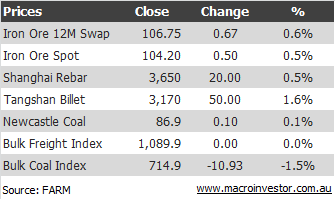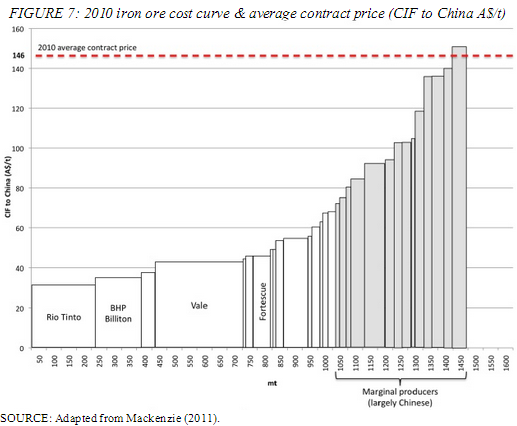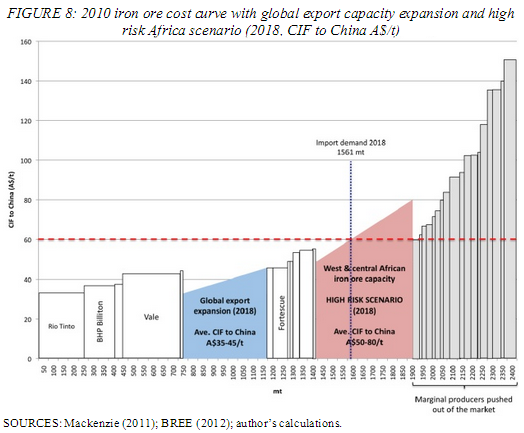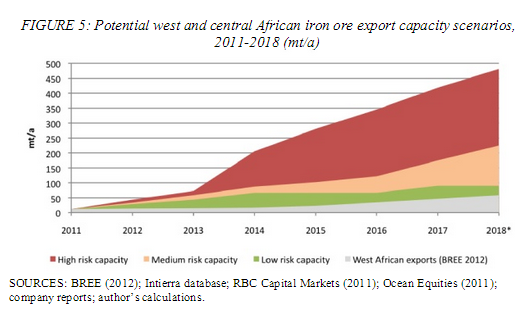Yesterday’s iron ore prices show more stability:

The rally in steel prices is reassuring but it looks like more pressure ahead for thermal coal.
There is a quote today from Mark Pervan of ANZ in the SMH about the longer term price for iron ore:
The head of ANZ’s commodities research, Mark Pervan, said the market was beginning to look more ”real” after returning above $US100 a tonne (the price yesterday closed at $US103.70 a tonne).
“Now it’s not at the $US120-$US130 that we saw three to four months ago because China now has an overhang in supply,” Mr Pervan said.
“[But] if we … [assume] that China will probably muddle through for the next three to six months … [then it] is likely to take that period before we see the iron ore and coal markets start to sustain better prices in the market,” he said.
ANZ’s house view was that the trading range for iron ore had probably dropped by about $US20 a tonne, from the $US130-$US150 a tonne range that existed for the past year, to about $US110-$US130 a tonne.
But there would likely be a medium-term floor under the price at around $US100 to $US120 a tonne, given the cost structure of domestic iron ore supply in China.
“[And] this will be the catalyst to start to see a shutdown in some of the domestic supply [in China],” Mr Pervan said.
“So we’ll start to see a pull-back in supply that tightens the market up generally and puts a floor in the market around $US110.”
Here is what Mr Pervan is talking about, the iron ore cost curve:

The theory being that the more expensive Chinese producers get knocked out and the price is set against the marginal cost of the last export tonne, somewhere above $100.
But there a couple of flies in the ointment here. First, the Chinese may decide that iron ore is a strategic commodity and want to protect local sources, meaning the glut gets worse.
The second is that there are two sides to this equation, the other being demand. As the Chinese rebalance their economy away from fixed-asset investment, forecast growth in steel output is not going to match current projections.
The third problem is this, the new supply:

Which is due to hit the market right about…well…now:

And the fact is, in a fundamentals driven market, where the marginal cost of the last tonne produced sets the price, gentle easings in price, reassuring price floors, steady replacement of price with volume are all old wives tales (or new wives tales).
Commodities have a history of blasting off on supply squeezes then crashing on subsequent gluts. We used to understand this. I wonder what happened?

